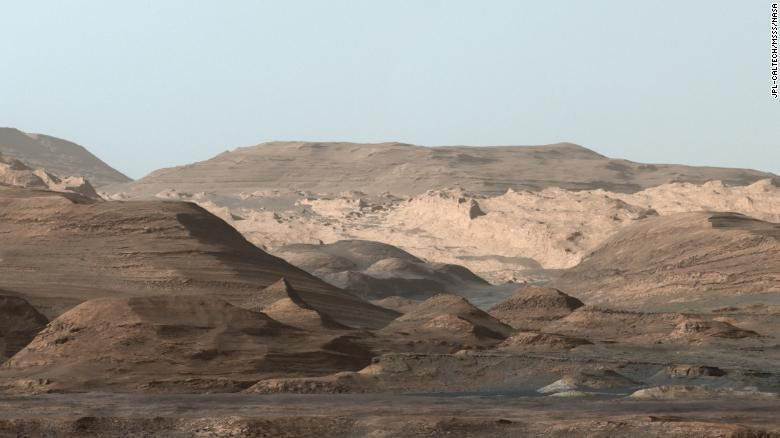(CNN) – Mars was a hot, humid planet capable of supporting life billions of years ago. Somehow the planet lost its atmosphere and became the harsh, frozen desert it is today.
The Curiosity rover, which landed on Mars in 2012, is exploring various aspects of the Gale crater on Mars. Transition from heat to humidity Dry and very cold.
A recent study, compiled from data captured by one of the rover’s instruments, suggests that Mars actually switched between wet and dry seasons before completely losing its surface water 3 billion years ago.

This composite image of the highlands of Sharp Mountain was taken by NASA’s Curiosity rover on September 9, 2015.
Rover Curiosity It has been continuously climbing Mount Sharp for nearly 5 kilometers, located in the center of the Gale Valley since 2014.
An instrument called the chemcam sits on the rover’s mast and includes a high-resolution camera and laser, which help the rover ‘s evaporating rover analyze their chemical composition. Chemcom has an infrared laser that can heat rock fragments up to 18,000 degrees Fahrenheit (approximately 10,000 degrees Celsius). It evaporates the rock to form plasma, allowing scientists to basically look inside for the minerals and chemicals that make up the rock and look back at the planet’s geological history.
The Chemcom camera was used to capture landscape observations on Sharp Mount, which revealed fragments from the past of Mars as the rock varied.
A Tuesday history lesson
Mount Sharp is an intriguing feature of Mars because it is one of the best ways for the Red Planet to record its climate, water and sedimentary history.
A key objective of the Curiosity mission is to study the transition between the habitable environment of the past and the current cold and dry climate of Mars. These rock layers have recorded that change in great detail, ”said Roger Vince, co-author of the paper and a chemist at the Los Alamos National Laboratory.
The study was published in the journal Geography last week.
Orbits around Mars have previously recorded information about minerals within the slopes of Mount Sharp. Curiosity data have provided more detailed observations about sedimentary rock layers and revealed dry and wet periods on the planet’s past.
Curiosity finds great changes in the layers of the planet
As Curiosity climbed Sharp Mountain, the layers changed dramatically.
The base of Mount Sharp was once made of clay deposited by an area that filled the abyss. Above are layers of sandstone, and there is evidence of how they formed by wind-shaped dunes during the dry season. The layers above it reveal high flood deposits, indicating that wet conditions have returned to Mars.
Curiosity observes that these changes between the wet and dry seasons are large-scale events that alternate until the planet becomes permanently dry. Mount Sharp’s climatic history has allowed Curiosity to focus on a period of time ranging from 2.9 billion to 3.7 billion years ago.
As the rover continues its mission, Curiosity will continue to climb to the foot of Sharp Mountain, using its drill to further explore the types of rocks and what they reveal. It may provide additional information on the cause of such severe weather fluctuations.





:quality(85)/cloudfront-us-east-1.images.arcpublishing.com/infobae/KTKFKR763RBZ5BDQZJ36S5QUHM.jpg)